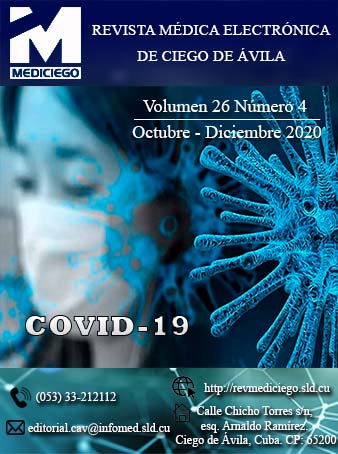Depression as a consequence of psychological harassment at work
Abstract
Introduction: psychological harassment or intimidation at work is a frequent cause of work stress and other health risks for workers, and can cause physical, psychological and emotional disorders, including depression.
Objective: to describe the characteristics that identify psychological harassment and the presence of depression in the work environment.
Methods: a bibliographic review was carried out using the databases ClinicalKey, MEDLINE, LILACS, Cumed, DynaMed and the academic Google search engine, between 2016 and 2020, in Spanish and English.
Development: psychological harassment is a problem of violence in the world of work. Various authors agree in defining it as the psychological or moral harassment that one or more people exert on others through mistreatment, contempt, humiliation, mockery and sarcasm, which seeks the psychological annihilation and the moral collapse of the victim in order to eliminate it from the work environment. It is a process made up of a series of hostile actions that, taken in isolation, could seem bland, but whose constant repetition has harmful effects on health. The most common psychological consequence is the presence of a major depressive episode, or the state of dysthymia, which can lead to suicide.
Conclusions: depression is an emotional disorder closely related to stressors that include the workplace. Its early identification in the presence of psychological harassment at work favors timely treatment and improves the quality of life of workersDownloads
Published
How to Cite
Issue
Section
License
Those authors who have publications with this journal accept the following terms of the License CC Attribution-NonCommercial 4.0 International (CC BY-NC 4.0):
You are free to:
- Share — copy and redistribute the material in any medium or format
- Adapt — remix, transform, and build upon the material
- The licensor cannot revoke these freedoms as long as you follow the license terms.
Under the following terms:
- Attribution — You must give appropriate credit , provide a link to the license, and indicate if changes were made . You may do so in any reasonable manner, but not in any way that suggests the licensor endorses you or your use.
- NonCommercial — You may not use the material for commercial purposes .
- No additional restrictions — You may not apply legal terms or technological measures that legally restrict others from doing anything the license permits.
Notices:
You do not have to comply with the license for elements of the material in the public domain or where your use is permitted by an applicable exception or limitation .
No warranties are given. The license may not give you all of the permissions necessary for your intended use. For example, other rights such as publicity, privacy, or moral rights may limit how you use the material.

























